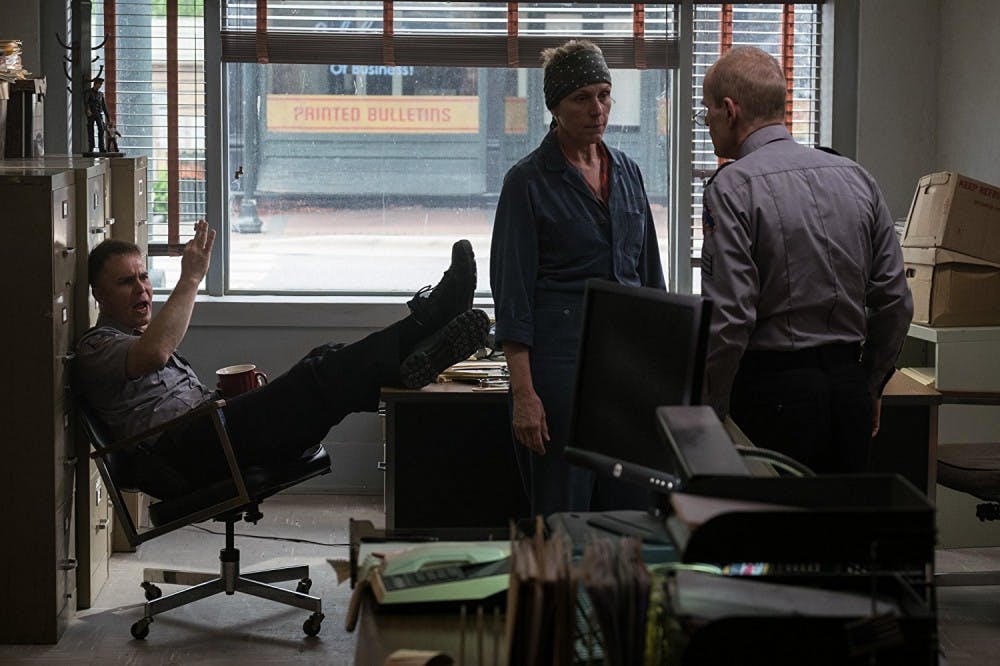In the fictional town of Ebbing, Missouri, people talk too fast, work too slow and drink too much. Isolated and rough around the edges, it's the perfect place to set the unsolved murder of teenager Angela Hayes.
“Three Billboards Outside Ebbing, Missouri,” written and directed by Martin McDonagh, has the gritty, tough-luck vibes of a small-town murder mystery. The characters that populate the town are very much “of the earth,” in the sense that they reflect the rough beauty of the land around them and always seem to have dirt on their knuckles.
The story is set in motion by Ebbing resident Mildred Hayes (Frances McDormand), whose daughter was raped and murdered several months prior. She is disgusted at the lack of action by authorities to bring to justice her daughter’s attacker, and in an attempt to speed up the process, rents out three billboards on which she posts controversial jabs at the local chief of police.
Ebbing, Missouri, is magnificent with its mountains and life, and it is this awe-inspiring setting which helps reveal the complexity of Mildred Hayes. Though tough-skinned and seemingly unshakable, she is gentle when caring for flowers and when communicating with wild animals. The natural beauty of Ebbing is not glorified or exaggerated — it is simple, unglamorous and real, much like Hayes herself.
What sets “Three Billboards” apart from other back-woods murder stories is that Ebbing is not a place that limits its inhabitants in the way that many small towns do. Mildred Hayes and her complicated, emotional rivalry with Chief Willoughby (Woody Harrelson) is both raw and absurd. The stark reality of cancer confronts comical insensitivity; the sickness of suicide clashes with a light-hearted narration of suicide letters; the tragedy of a man burning alive counters the ironic, over-dramatic opera music playing in his earbuds.
The characters and the decisions they make are larger than life. They are real enough that you can buy into it and believe in their actions for the sake of the story. But stepping outside of Ebbing, you might question if people would actually conduct their lives in this way. It was this element of the characterization — the careful balance of humanness and absurdity — that made the film both sincerely dramatic and subtly hilarious.
The movie’s soundtrack also walked this fine line. The music was sweeping and dramatic at scenes that were over-the-top. It was honest, sad and down-to-earth at moments that were real and human.
It is Harrelson’s character who physically embodies this technique the most. Though not shoved to the forefront as the person around whom the story revolves, Chief Willoughby is present in some capacity throughout the entire film. He pushes characters to make certain decisions long after it seems that his subplot is over. Even Hayes — with whom Willoughby engages in a small-town war — loves and admires the chief, even if she does so reluctantly. In a sense, he connects people to one another.
This, in essence, is the major triumph of the story: its ability to emphasize the importance of connection. “Three Billboards Outside Ebbing, Missouri” draws ties between humans and nature, comedy and emotion, kindness and cruelty, friends and enemies.
It’s is a film that you may be able to see just once, because it is a lot to take in. But if you watch it with an open, quiet mind, one time will be enough.

